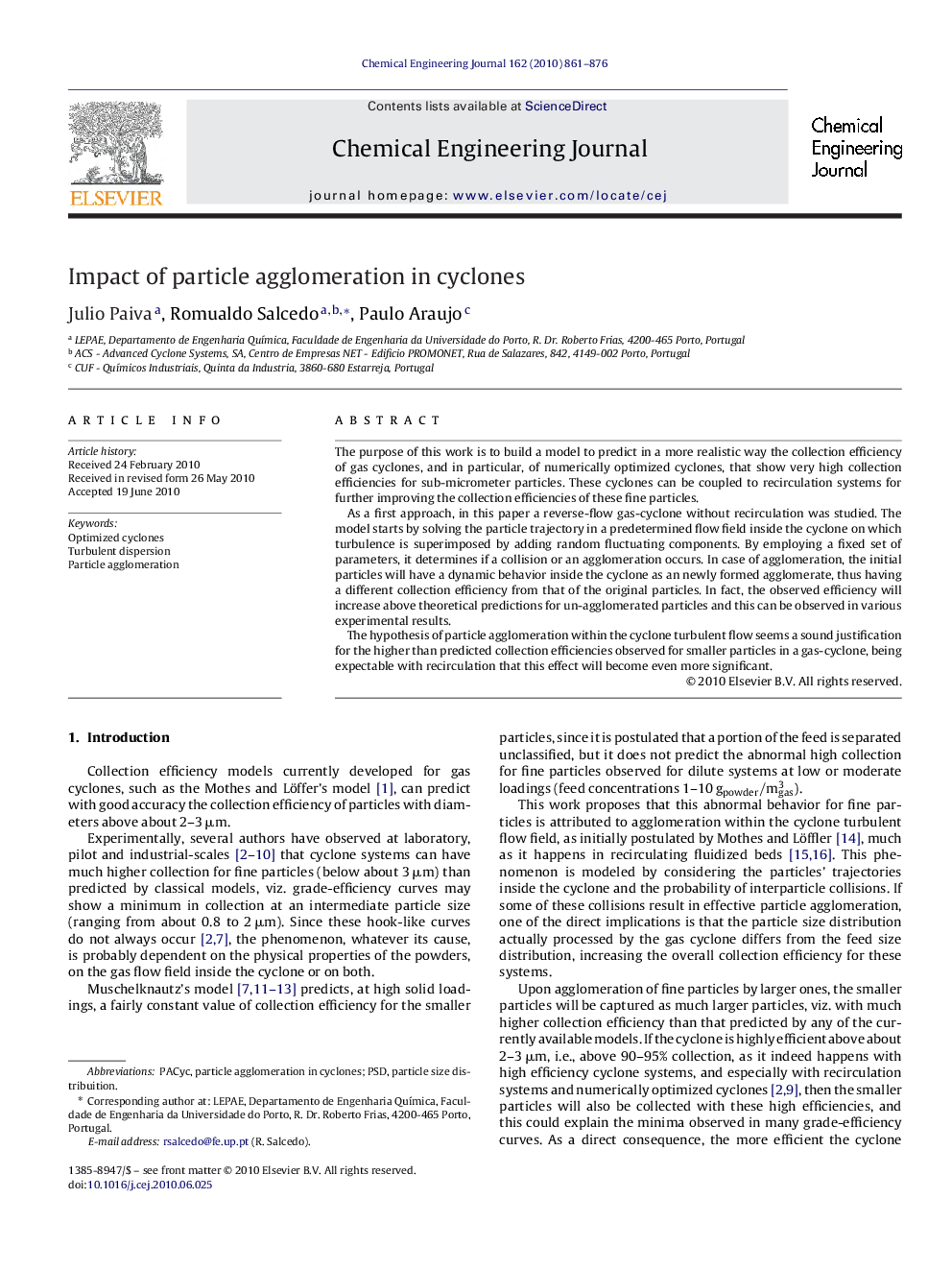| Article ID | Journal | Published Year | Pages | File Type |
|---|---|---|---|---|
| 152173 | Chemical Engineering Journal | 2010 | 16 Pages |
The purpose of this work is to build a model to predict in a more realistic way the collection efficiency of gas cyclones, and in particular, of numerically optimized cyclones, that show very high collection efficiencies for sub-micrometer particles. These cyclones can be coupled to recirculation systems for further improving the collection efficiencies of these fine particles.As a first approach, in this paper a reverse-flow gas-cyclone without recirculation was studied. The model starts by solving the particle trajectory in a predetermined flow field inside the cyclone on which turbulence is superimposed by adding random fluctuating components. By employing a fixed set of parameters, it determines if a collision or an agglomeration occurs. In case of agglomeration, the initial particles will have a dynamic behavior inside the cyclone as an newly formed agglomerate, thus having a different collection efficiency from that of the original particles. In fact, the observed efficiency will increase above theoretical predictions for un-agglomerated particles and this can be observed in various experimental results.The hypothesis of particle agglomeration within the cyclone turbulent flow seems a sound justification for the higher than predicted collection efficiencies observed for smaller particles in a gas-cyclone, being expectable with recirculation that this effect will become even more significant.
